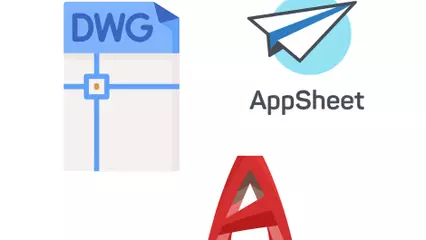Aplikacje Low-Code & No-Code - O czym mowa?
Low-Code / No-Code staje się coraz bardziej popularny na rynku. To świetne rozwiązanie stosowane do drastycznego skrócenia czasu tworzenia i rozwoju oprogramowania, co czyni go atrakcyjnym rozwiązaniem dla wielu firm, które chcą, aby ich aplikacje powstawały szybko i bez konieczności dużych inwestycji w kod za każdym razem, gdy potrzebują nowej funkcji lub aktualizacji.
Coraz więcej osób myśli o nich w kategoriach swojej kariery zawodowej jak i zastosowaniach w biznesie. Ten artykuł objaśnia czym są te platformy oraz jaka jest między nimi różnica. W tym wpisie dowiesz się także jakie są zalety i wady stosowania platform No-Code Low-Code, a także odpowiemy na najczęściej zadawane pytania:
- Czy No-Code lub Low-Code zwiastuje koniec Full-Code?
- Czy warto uczyć się Low Code? Jakie są ścieżki rozwoju?
- Ile zarabia się na stanowiskach związanych z Low-Code?
- W czym może pomóc ci Developico?
Aplikacje Low-Code & No-Code - Szczegóły
Czym jest No-Code?
No-code development platforms (No-Code) to platformy IT umożliwiające programistom i nie-programistom tworzenie aplikacji, automatyzacji, botów i raportów, za pomocą graficznych interfejsów użytkownika i konfiguracji, zamiast tradycyjnego programowania komputerowego.
No-code są ściśle powiązane z Low-code development platforms (low-code), ponieważ obie mają na celu przyspieszenie procesu tworzenia aplikacji.
Jednak w przeciwieństwie do low-code, no-code nie wymagają w ogóle pisania kodu. Wszystko opiera się o pracę na zasadzie Point-and-Click oraz Drag-and-Drop. Panele konfiguracyjne operują na zasadzie WYSIWYG (What You See Is What You Get). Dodatkowo przy tworzeniu bardzo często korzysta się z gotowych szablonów.
Platformy No-Code często można rozszerzać o własne funkcjonalności, ale wymaga to zawsze programowania Full-Code (np: w języku JavaScript, PHP czy C#)
Popularnymi przykładami platform No-Code są AppSheet, WordPress, SharePoint Online czy Airtable.
Czym jest Low-Code?
Low-Code development platforms (Low-Code) to platformy IT dla programistów i nie-programistów.
Pod wieloma względami (przeznaczenie, charakterystyka pracy) bardzo przypominają platformy No-Code. To co jednak je różni, to posiadanie możliwość korzystania z prostego języka programowania (często języka funkcyjnego podobnego do tego wykorzystywanego w Excelu) w celu budowy bardziej zaawansowanych operacji.
Pomimo, że ów język wymaga rozpoznania i nauki, to nadal jest to nieporównywalnie szybsze i prostsze niż nauka języka Full-Code (typu JavaScript, PHP czy C#).
Samo podejście Low-Code zmniejsza nakład pracy potrzebnej do zbudowania rozwiązania, umożliwiając szybkie dostarczanie aplikacji biznesowych, automatyzacji, raportów czy botów. Platformy Low-Code są często wykorzystywane w biznesie, gdzie wymaga się budowania rozwiązań dostosowanych pod specyfikę firmy, a chce się zaoszczędzić na czasie oraz nie chce się angażować zespołu programistów i ponosić związanych z tym kosztem.
Popularnymi przykładami platform Low-Code są Microsoft Power Apps czy Mendix.
Pamiętaj: Platformy No-Code jak i Low-Code nie opisują konkretnego rozwiązania czy narzędzia. To raczej cecha sposobu budowy rozwiazania i platformy na której takie rozwiazania się buduje.
Innymi słowy będziesz mógł znaleźć narzędzia No-Code jak i Low-Code od Microsoft, Google i mnóstwa niezależnych dostawców.
Platformy Low-Code & No-Code
Platformy Low-Code pozwalają na pisanie prostego i szybkiego oprogramowania, które będzie działać na każdym urządzeniu. Są świetne dla dużych organizacji, ponieważ wymagają mniej szkoleń, co może zaoszczędzić czas przy szybkim wprowadzaniu nowych produktów lub usług w ciągle zmieniającej się branży.
Część Power Platform i M365
Część Google Workspace
Szeroki kontekst
Aby zrozumieć sytuację platform No-Code i Low-Code na rynku oraz ich przyszłość, należy zrozumieć skąd się wzięły i dlaczego?
Problemy XXI wieku
Wg World Economic Forum do 2030 roku przebranżowienia będzie wymagało ok. 1 miliard ludzi. Mówi się także o tym, że jeśli dzisiaj człowiek przebranżawia się średnio 2-3 razy w życiu zawodowym (co 20-30 lat), to w 2050 może to być nawet 10-15 razy (co 3-5 lat). Zauważa to rynek edukacyjny, który niewiarygodnie rośnie, jest wyceniany na ~90mld USD i w 2028 roku będzie wart 2.3 tryliony (!) USD.
W chwili obecnej największym zainteresowaniem cieszy się branża IT – kierunki IT są najbardziej oblegane, pojawiają się liczne spółki edukacyjne oraz bootcampy. A i tak specjalistów wciąż brakuje i ta liczba nie maleje. Szacowało się, że w 2020 na rynku europejskim będzie brakować 500.000-600.000 programistów (source, source). Dzisiaj już mówi się o braku ponad 1mln specjalistów (brak aktualnych badań).
Skąd takie zapotrzebowanie na branże IT? Głównie z powodu przyspieszenia zmian rynkowych i idących za tym koniecznych zmian w biznesie. Dzisiaj, aby pozostać konkurecyjnym, trzeba dokonywać szybszych zmian w funkcjonowaniu operacyjności przedsiębiorstwa.
Kilka przykładów branżowych:
Branża produkcyjna
Wg badań opublikowanych na Harvard Business Review mniej niż 25% pracowników pierwszej linii uważa, że może korzystać w pracy z odpowiedniej technologii. Innymi słowy ponad 75% pracowników musi korzystać z przestarzałych, złożonych i rozproszonych rozwiązań technologicznych.
- Ponadto aż 62% producentów nadal korzysta z długopisu i papieru, aby śledzić niektóre kluczowe procesy produkcyjne (source).
- Mniej niż 50% producentów dysponuje obecnie inteligentnymi rozwiązaniami na poziomie operacyjnym (source).
- Zaledwie 13% organizacji zajmujących się produkcją posiada pełny przegląd działań na wszystkich poziomach łancucha dostaw (source).
Branża handlowa
- Prawie 30% pracowników sklepu nie ma możliwości sprawdzenia stanów magazynowych sklepu
w czasie rzeczywistym (source). - Ponad 45% pracowników sklepu nie ma możliwości szybkiego dostępu do danych klienta (source).
- Prawie 50% pracowników wie czasami mniej o produktach niż klienci (source).
Popularne wyzwania do rozwiązania
Wydaje się więc, że niezależnie od branży, jest wiele obszarów do poprawienia. W dodatku pewne wyzwania powtarzają się. Do takich przykładów będzie należeć:
- Zbyt dużo manualnych procesów
- Trudne z poziomu działu operacyjnego przydzielanie zadań i śledzenie, czy zostały ukończone
- Ciągle aktualizowanie treści wymaga dobrego wsparcia narzędziowego i powiadamiania osób wykorzystujących te informacje
- Stale rosnące potrzeby bezpieczeństwa danych np poprzez ograniczenie dostepu użytkownikom do niektórych informacji
- Niewielka integracja między różnymi systemami i procesami
Rozwiązanie problemów….
Z poprzedniej sekcji dowiedzieliśmy się o problemach. Jak więc rozwiązać tego typu problemy? Przede wszystkich poprzez:
- Wzmocnienie kultury organizacji i społeczności: Cała organizacja powinna być świadoma tego co dzieje się w firmie, jakie zmiany nadchodzą, gdzie znaleźć newsy firmowe, a gdzie bazę wiedzy. Poszczególny obszary hierarchii organizacji powinny posiadać dedykowane kanały informacyjne – działy, departamenty czy jednostki biznesowe. Podobne podejście powinno dotyczyć obszarów spoza hierarchii organizacji ale dotyczących konkretnych obszarów: programiści poszczególnych języków czy handlowcy poszczególnych grup produktowych powinny posiadać własną przestrzeń wymiany informacji.
- Wprowadzenie obszarów dedykowanych pracy zespołowej: Każdy pracownik pracuje w więcej niż jednym zespole. To powoduje, że kontekst pracy zespołowej powinien być wyraźnie odseparowany pomiędzy zespołami czy projektami.
- Usprawnienie szkoleń pracowników: Liczba narzędzi dostępnych do natychmiastowego wykorzystania przez pracownika stale rośnie. Z tego względu wymagane jest ciągłe edukowanie pracowników w zakresie istniejących narzędzi jak i tych dochodzących.
- Unowocześnienie interfejsu użytkownika: dzisiaj nie wystarczy już by interfejs graficzny aplikacji posiadał wszystkie funkcje, których może potrzebować użytkownik. Ogromne znaczenie ma intuicyjne ułożenie informacji oraz logiczna struktura przejść między ekranami.
- Angażowanie pracowników w usprawnienia: tworząc usprawnienie procesu lub jego fragmentu, bardzo ważne jest by w prace rozwojowe były zaangażowane osoby dobrze znające i rozumiejące proces. Idealnie by było, gdyby te osoby były także zaangażowane w prace implementacyjne
… z wykorzystaniem narzędzi IT
Po tym, gdy uświadomiliśmy sobie wyzwania oraz poznaliśmy kierunek w jakim należy patrzeć aby je rozwiązać, przyszedł czas na rozwiązanie. Jak sprostać stawianym wymaganiom?
Naturalnie odpowiedź brzmi: w rozwiązaniach IT. Co należy przez to rozumieć? Aplikacje, automatyzacje, robotyzacje, boty, analityka i raporty.
Gdybyśmy jednak mieli WSZYSTKO zbudować w oparciu o Full-Code, to prace zajęłyby nam miesiące, jeśli nie lata. A dzisiaj, jeśli budowa rozwiazania IT zajmuje ponad rok, to trzeba bardzo dobrze zastanowić się czy na pewno gra jest warta świeczki – za rok nasz biznes może być w zupełnie innym miejscu niż obecnie. Czyli może tak się zdarzyć, że oddane do użytku rozwiązanie, po roku implementacji, będzie od razu wymagało zmian. O piętrzących się kosztach też warto wspomnieć.
I tutaj pojawiają się platformy No-Code oraz Low-Code. Całe na biało.
- Przypisania odpowiedzialności i poziomów akceptacji
- Zbieranie NPSów (feedback od klientów)
- Obsługa ticketów supportowych
- Zarządzanie obowiązkowymi szkoleniami
- Monitoring wykorzystania czasu urlopowego i wysokości rezerwy
- Generowanie ofert sprzedażowych
- Kontrola dyspozycyjności sprzętu / ludzi
- Procesowanie dokumentów (np. akceptacja)
- Wnioski o nowe konta
- Integracja systemów
- Nadzór nad terminowością badań lekarskich
- Rozliczanie czasu realizacji zadań
- Zarządzanie audytami
- Tworzenie, akceptacja i archiwizacja umów
- Planowanie inwestycji, zapotrzebowania
- Automatyczne bookowanie spotkań
- Monitoring wykorzystania czasu urlopowego i wysokości rezerwy
- Akceptacja wydatków
- Monitoring wykorzystania budżetów
- Baza CV
- Zarządzanie zasobami (budynki wielokondygnacyjne, ruchomości w firmie czy licencje)
- Wnioski o delegację
- Planowanie i obsługa wydarzeń i eventów
- Utrzymywanie i porządkowanie informacji oraz danych
- Automatyczny system procesu rekrutacji
- Karty obiegowe
- Rozliczanie delegacji i wydatków
- Rejestr wakatów
- Standaryzacja procesu projektowego I dokumentacji
- System ocen pracowniczych
Tak, rozwiązania No-Code Low-Code dają największy zwrot z inwestycji, kiedy powstaje ich naprawdę dużo. Oczywiście to wymaga odpowiedniego podejścia i właściwego zarządzania.
Zalety platform No-Code i Low-Code

Dzięki zastosowania platform No-Code / Low-Code ograniczamy całościowy budżet jak i czas potrzebny do zbudowania rozwiązania.

Narzędzia No Code Low code pozwalają istotnie zmniejszyć liczbę obiegów papierowych jak i znacznie uprościć samo rozwarstwienie aplikacji, jeśli takowe istnieje.

Platformy No Code Low Code świetnie nadają się na minimalizowanie ograniczeń przestarzałych rozwiązań. Dzięki takiej integracji istotnie wpływamy na oczekiwania końcowe użytkowników
Wady platform No-Code i Low-Code

Im więcej mamy rozwiązań tym trudniej nam nimi zapanować. Stąd też, szczególnie na początku przygody z platformami, wziąć wsparcie od zaufanego Dostawcy lub producenta. To pozwoli dużo lepiej zapanować nad potencjalnym chaosem.

Narzędzia No Code Low Code nie posiadają rozbudowanego wglądu w dane serwerowe.
Powyższe dane wskazują jak szybko i jak bardzo urośnie ten rynek w najbliższych latach, co dobrze odpowiada na pytanie: czy warto zainteresować się gałęzią No-Code / Low-Code.










